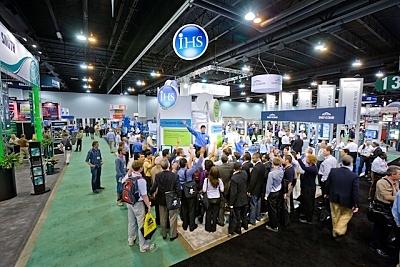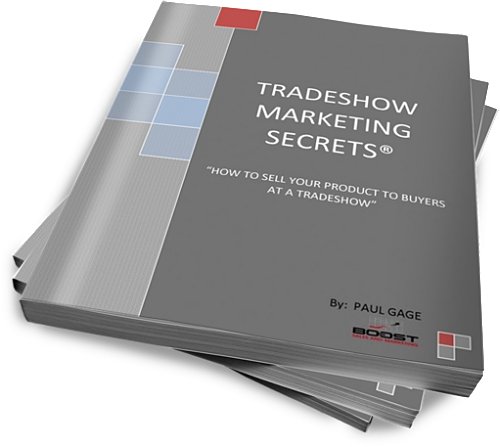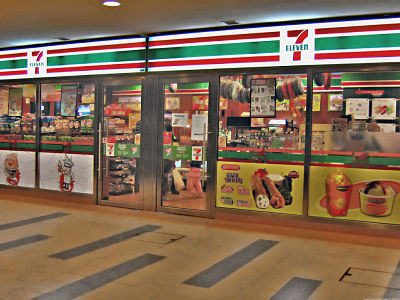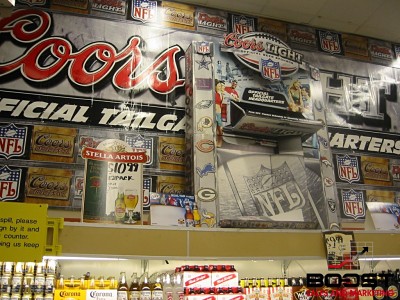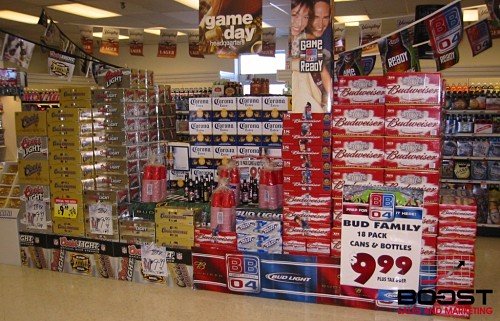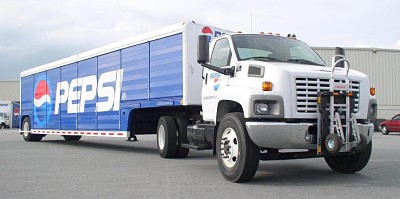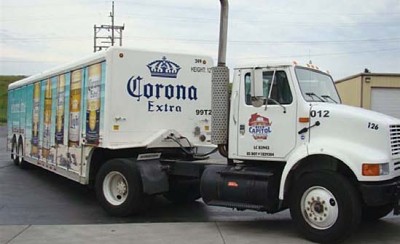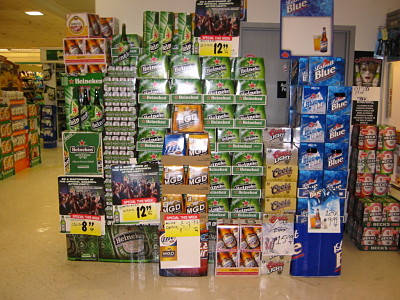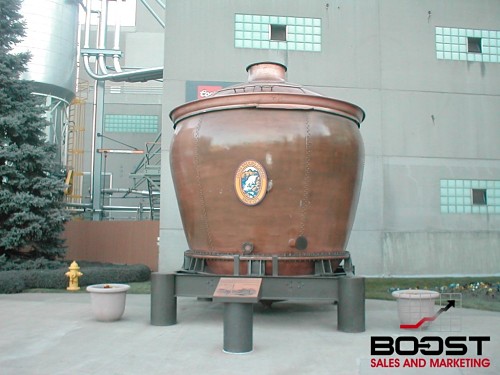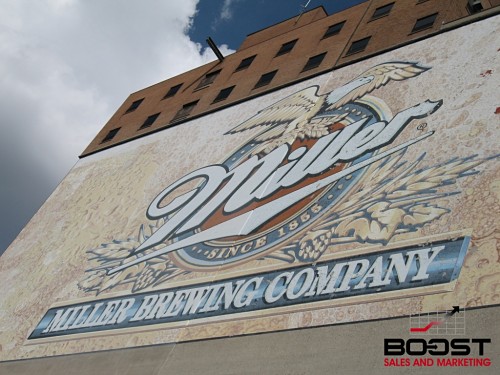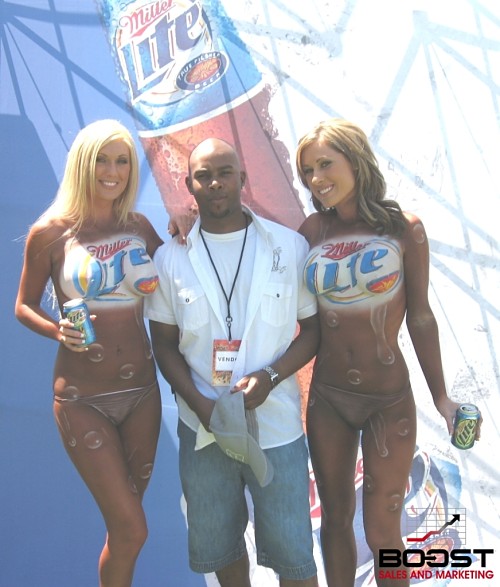Major Retailer Terms and Glossary
Imagine having a meeting with a major retail buyer and they start speaking in retail terms and you are unable to understand what they are speaking about.
There is no worst feeling when a retail buyer mentions a retail term you are unfamiliar with and you are too scared to ask them what that means in fear that you should already know.
These retail terms will help you fill out your vendor agreements and they will also give you the confidence you need when you are speaking with a retail buyer.
Action Alley: The sales area of a store located immediately after entering.
Ad Slick: Ad slicks refer to the final, camera-ready advertisement. It gets its name from the glossy paper on which it is printed.
Anchor Store: A major retail store used to drive business to smaller retailers that physically surround it. These larger department stores or grocery stores are generally part of a retail chain and are the prominent business in a shopping mall.
ANSI: American National Standard Institute
Average Inventory Cost: Average inventory cost is found by adding the beginning cost of inventory for each month plus the ending cost inventory of the last month in the period. If calculating for a season, divide by seven. If calculating for a year, divide by thirteen.
Big Box Stores: Large stand-alone store with varying market niches.
Bill of Lading: A bill of lading is a document used as evidence that a transport company or carrier received goods from a shipper.
Black Friday: Black Friday is the day after Thanksgiving- it's the biggest shopping day of the year.
Brand: A brand is a name, symbol, or other identifying mark for a vendor's goods or services. It is distinct from other vendors.
Breakpack: A carton received in the warehouse with two or more inner selling units that can be broken down and shipped to the stores.
Break-even Point: The point in business where the sales equal the expenses. There is no profit and no loss.
Brick and Mortar: Brick-and-mortar store are retail shops with permanent physical locations.
Business Plan: A detailed document describing the past, present, and future financial and operational objectives of a company.
Case Pack: Merchandise shipped in full cases. Cartons cannot be broken into smaller cases.
Cash Discount: A percentage reduction in price for payment within a specified period of time.
Cash Flow: The movement of money in and out of a business and the resulting availability of cash.
Category Killer: A large retail chain store that is dominant in its product category. This type of store generally offers an extensive selection of merchandise at prices so low that smaller stores cannot compete.
Chain Store: One of a number of retail stores under the same ownership and dealing in the same merchandise.
Comp Sales: Comparable-store sales are a measurement of productivity in revenue used to compare sales of retail stores that have been open for a year or more. Historical sales data allows retailers to compare this year's sales in their store to the same period last year.
Contribution Margin: Contribution margin is the difference between total sales revenue and total variable costs. The term is applied to a product line and is generally expressed as a percentage.
CO-OP: An advertising allowance offered by a vendor, payable upon proof of an ad having been run.
Cost of Goods Sold: The price paid for the product, plus any additional costs necessary to get the merchandise into inventory and ready for sale, including shipping and handling.
Coupon: A promotional tool in the form of a document that can be redeemed for a discount when purchasing goods or services. Coupons feature specific savings amount or other special offer to persuade consumers to purchase specific goods or services or to purchase from specific retailers.
CRM - Customer Relationship Management: Customer relationship management (CRM) is a business strategy designed to reduce costs and increase profitability by strengthening customer loyalty.
Cyber Monday: Cyber Monday is the Monday after Thanksgiving and one of the busiest shopping days of the year for online retailers. Retailers notice a spike in sales on this day as many consumers who were too busy to shop over the
Thanksgiving weekend, or who did not find what they were looking for, head to the web on Monday from work or home to find bargains.
Department Stores: Retailers that carry a broad variety and deep assortment, offer considerably good customer service, and are organized into separate departments for displaying merchandise.
Digital Signage: Digital signage refers to a variety of technologies used to replace traditional retail signs. Instead of static print signs and billboards, digital signage is composed of electronic signs dispersing content and messages in the most targeted, interactive way.
Discount Stores: Retailers that offer low prices and low customer service.
Drop Shipping: Drop shipping is the process, in which a retailer markets a product, collects payment from the customer and then orders the item from a supplier, which is then shipped directly to the customer. The retailer's profit is the difference between the amount collected and the amount spent. No inventory is held and the retailer is not involved in the shipping.
Drug Stores: Retailers that resemble specialty stores who concentrate on health and personal grooming merchandise.
Electronic Data Interchange (EDI): Electronic Data Interchange is the application-to-application transfer of business documents like purchase orders, invoices, shipping notes, etc. between computers.
E-retailers: Retailers who operate their business solely on the internet.
Facing: The number of identical products (or same SKU) facing out toward the customer. Facings are used in plan-o-grams and when zoning a retail store.
Fair Trade: Fair trade is an organized movement developed to promote standards of environmentalism and fair wages; alleviate global poverty; and ensure that companies negotiate with the growers, manufacturers and producers of products for a fair price. This social-responsibility movement focuses on exports from developing countries.
First In, First Out: A method of stock rotation in which goods that are received first are sold first. Newly received product is stocked behind the older merchandise.
FOB: Free on Board or Freight on Board - the point at which the ownership of merchandise passes to the purchaser. Used to indicate that the seller provides transportation from the factory to trucks, railcars or consolidators after which the buyer pays all the carrier charges.
Gondola: Primary merchandising fixture consisting of a base, free-standing vertical wall, and a number of four of sections of shelving.
Gross Margin: Gross margin is the difference between what an item costs and what it sells for.
Gross Margin Percent: The Gross Margin Percent is calculated as follows: Sales - Cost / Sales = Gross Margin Percent.
Gross Margin Return on Investment: A measure of inventory productivity that expresses the relationship between your total sales, the gross profit t margin you earn on those sales, and the number of dollars you invest in inventory.
Hardlines: A store department or product line primarily consisting of merchandise such as hardware, housewares, automotive, electronics, sporting goods, health and beauty aids, or toys.
Home Improvement Stores: Retailers that combine the traditional hardware store with gardening and lumber.
Inventory: Inventory is the merchandise a retail store has on hand. The term also refers to the act of counting, itemizing and recording in-stock merchandise or supplies.
Inventory Turnover: The number of times during a given period that the average inventory on hand is sold and replaced.
Keystone: Keystone pricing is a method of marking merchandise for resale to a price that is double the wholesale price.
Kiosk: The term kiosk, as related to retailing, refers to a small stand-alone structure used as a point of purchase. This can be either a computer or display screen used to disseminate information to customers; or a free standing, full-service retail location. Kiosks are often found in malls and other high-traffic locations.
Layaway: Layaway is the act of taking a deposit on store merchandise for a customer to purchase at a later date.
Letter Of Credit: The method of payment for import purchase orders.
LIFO: Last In, First Out - A method used in rotating inventory.
Loss Leader: Merchandise sold below cost by a retailer in an effort to attract new customers or stimulate other profitable sales.
Loss Prevention: Loss prevention is the act of reducing the amount of theft and shrinkage within a business.
LTL: Less then Truckload - mixed freight, not all the same supplier or purchase order.
MABD: Must Arrive by Date - The date in which a purchase order must be received at the warehouse.
Margin: The amount of gross profit t made when an item is sold.
Markup: A percentage added to the cost to get the retail selling price.
Markdown: A planned reduction in the selling price of an item, usually to take effect either within a certain number of days after seasonal merchandise is received or on a specific date.
Marketing Calendar: A marketing calendar is a tool used by retailers to show where and when marketing events, media campaigns and merchandising efforts are happening, as well as the results.
Master Carton: Several cases being shipped in one package. These can be broken down into the individual cases and sent to stores.
Master Pack: Carton received that contains more than one warehouse pack or shipping unit inside it. This is very common in certain orders, such as imports.
Merchandise Mix: A merchandise mix is the breadth and depth of the products carried by retailers. Also known as product.
Minimum Advertised Price: A vendor's pricing policy that does not permit its resellers to advertise prices below some specified amount. It can include the resellers' retail price as well.
Odd-even pricing: A form of psychological pricing that suggests buyers are more sensitive to certain ending digits.
Off -the-mall Stores: Retailers that offer the same selection of merchandise as a department store but are not connected to a mall.
Open-to-buy: Merchandise budgeted for purchase during a certain time period that has not yet been ordered.
Operating Expenses: The sum of all expenses associated with the normal course of running a business.
Plan-o-gram: Visual description, diagram or drawing of a store's layout that includes placement of particular products and product categories.
Point-of-purchase Display: Point-of-purchase displays, or POP displays, are marketing materials or advertising placed next to the merchandise it is promoting. These items are generally located at the checkout area or other location where the purchase decision is made. For example, the checkout counters of many convenience stores are cluttered with cigarette and candy POP displays.
Point of Sale (POS): Point of sale (POS) refers to the area of a store where customers can pay for their purchases. The term is normally used to describe systems that record financial transactions such as electric cash registers or an integrated computer system that records the data that comprises a business transaction for the sale of goods or services.
Private Label: Products that are generally manufactured or provided by one company under another company's brand.
Product Breadth: The product breadth is the variety of product lines offered by a retailer.
Product Depth: Product depth is the number of each item or particular style of a product on the shelves. Product depth is also known as product assortment or merchandise depth.
Product Life Cycle: The stages that a new product is believed to go through from the beginning to the end: introduction, growth, maturity and decline.
Profit Margin: A ratio of profitability calculated as earnings divided by revenues. It measures how much out of every sales dollar a retail business actually keeps in earnings.
Purchase Order: A purchase order (PO) is a written sales contract between buyer and seller detailing the exact merchandise or services to be rendered from a single vendor.
Quantity Discount: A reduction in price based on the amount purchased. May be offered in addition to any trade discount.
Retailing: The sale of goods or commodities in small quantities directly to consumers.
Run of Paper (ROP): Run of paper is an advertising term used by newspapers that refers to an advertisement that may be placed anywhere within the paper.
Sales Floor: The sales floor is the location of a retail store where goods are displayed and sales transactions take place. For example, the receiving of merchandise takes place in the stock room, but all direct sales and customer interactions are done on the sales floor.
Shrinkage: Retail shrinkage is a reduction or loss in inventory due to shoplifting, employee theft, paperwork errors and supplier fraud.
SKU: The stock keeping unit (SKU) is a number assigned to a product by a retailer to identify the price, product options and manufacturer.
Softlines: A store department or product line primarily consisting of merchandise such as clothing, footwear, jewelry, linens and towels.
Specialty Stores: Retailers that concentrate on a limited number of complementary merchandise categories and provide a high level of customer service in an area typically less than 8000 square feet.
Standard Industrial Classification Code (SIC Codes): A coding system using four digits to identify specific c industrial sectors within the federal government. The first two digits identify the broad industrial sector and the last two digits represent a facility's specialty within this broad sector.
Staple Goods: Staple goods are products purchased regularly and out of necessity. Traditionally, these items have fewer markdowns and lower profit margins. While price shifts may raise or lower demand for certain kinds of products, the demand for staple goods rarely changes when prices change.
TI/HI: Also called Pallet Pattern. TI refers to the number of cases that make up a tier or layer on a pallet. HI refers to the number of tiers or layers on the pallet. A pallet holding five cases of an item on a layer, stacked four high has a TI/HI of 20.
Trade Credit: An open account with suppliers of goods and services.
Trade Discount: A discount on the list price given by a manufacturer or wholesaler to a retailer.
Turn: Sometimes called a cycle. The number of times a product completes a cycle of moving through a warehouse generally measured within a year's time.
UCCNET: Uniform Code Council Network - A not-for-profit subsidiary of the Uniform Code Council, provides globally-endorsed item registration and synchronization services that reduce the costs and delays associated with bad data. By utilizing UCCnet services, companies and their trading partners can achieve significant improvements in supply chain efficiency by using and exchanging information that is: accurate, up to date and compliant with industry standards.
Vendor Pack: Original packaged quantity or merchandise as shipped from the vendor.
Visual Merchandising: Visual merchandising is the art of implementing effective design ideas to increase in-store traffic and sales volume.
Wholesale: Wholesale is the sale of goods, generally in large quantity, to a retailer for resale purposes.
Working Capital: Liquid assets available to build and grow a retail business. It is measured by current assets minus current liabilities. A positive working capital is needed until the retailer can produce a profit.




